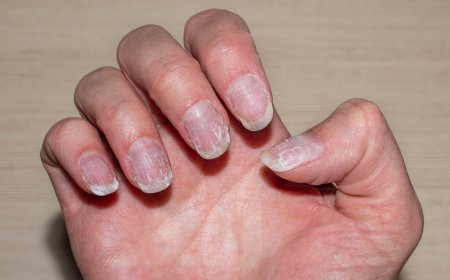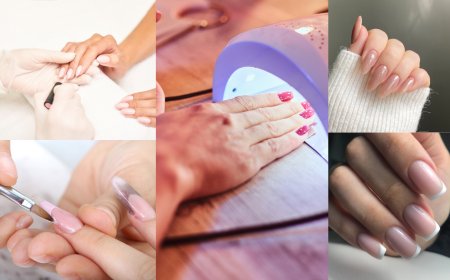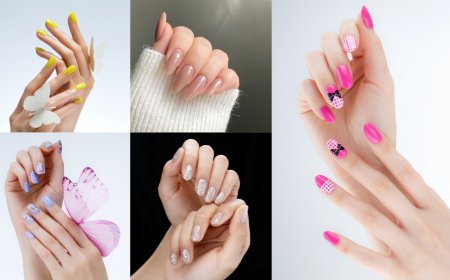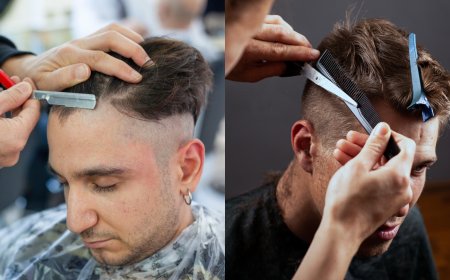Prevent Nail Damage During Canada’s Harsh Winters – Expert Tips
Protect your nails from Canada’s harsh winter with expert tips! Learn how to prevent dryness, brittleness, and breakage with hydration, diet, and care.

Canada’s winter brings freezing temperatures, dry indoor heating, and harsh winds—all of which can take a serious toll on your nails. Many people experience brittle, peeling, or cracked nails during this time, but with the right care, you can keep them strong and healthy. Here are expert-backed tips to protect your nails from winter damage.
1. Keep Your Nails Hydrated
Cold weather and dry indoor air can zap moisture from your nails, making them weak and brittle. Just like your skin, nails need hydration to stay strong.
How to keep nails moisturized:
- Apply a cuticle oil daily, especially before bed, to nourish and strengthen your nails. Look for ingredients like jojoba oil, vitamin E, and almond oil.
- Use a rich hand cream with shea butter or glycerin to lock in moisture and prevent cracks.
- Drink plenty of water to hydrate your body from within, which helps keep nails flexible and less prone to breaking.
2. Wear Gloves Outdoors
Exposure to cold, dry air can make nails brittle and more likely to split. Protect them by wearing insulated gloves whenever you step outside.
Bonus Tip:
- If you’re handling snow, ice, or water, wear waterproof gloves to prevent nails from becoming waterlogged and weak.
3. Avoid Excessive Water Exposure
Frequent handwashing and long baths might seem harmless, but prolonged exposure to water can cause nails to soften and weaken.
How to protect your nails:
- Wash hands with lukewarm water instead of hot water, which strips natural oils.
- After washing, pat hands dry instead of rubbing, and apply hand lotion immediately.
- Wear rubber gloves when washing dishes or cleaning to prevent excessive soaking.
4. Trim and File Regularly
Long, uneven nails are more likely to snag, break, or split—especially when they become dry in the winter.
Expert recommendations:
- Trim nails every 1–2 weeks to maintain a healthy length.
- Use a glass or fine-grit nail file to smooth rough edges and prevent breakage.
- Always file in one direction rather than back and forth to avoid weakening the nail structure.
5. Choose a Strengthening Nail Polish
Not all nail polishes are created equal. Some contain harsh chemicals that can make nails even more brittle.
What to look for:
- Use a nail-strengthening polish containing biotin, keratin, or calcium to fortify your nails.
- Avoid nail polish removers with acetone, which can be extremely drying. Instead, use a gentler formula with added moisturizers.
- Give your nails a break from polish every few weeks to prevent discoloration and allow them to breathe.
6. Maintain a Healthy Diet
Nail health starts from the inside. Eating the right nutrients can strengthen nails and promote growth.
Nail-friendly foods to include in your diet:
- Biotin-rich foods: Eggs, nuts, seeds, and whole grains help improve nail strength.
- Omega-3 fatty acids: Found in fish (salmon, mackerel), walnuts, and flaxseeds, omega-3s prevent nails from becoming dry and brittle.
- Zinc and iron: Leafy greens, lean meats, and beans support healthy nail growth and prevent white spots or ridges.
7. Avoid Harsh Chemicals
Winter is already tough on nails, so avoid additional stress from household cleaning products and alcohol-based sanitizers.
How to minimize damage:
- Wear rubber gloves when cleaning to prevent exposure to strong detergents.
- Choose alcohol-free hand sanitizers, as alcohol can strip moisture from nails and skin.
- Avoid gel and acrylic nails too often, as they can weaken your natural nails over time.
Final Thoughts
Canada’s winter doesn’t have to ruin your nails! By following these expert tips—keeping your nails moisturized, wearing protective gloves, minimizing water exposure, and maintaining a nail-friendly diet—you can keep them strong, healthy, and beautiful all season long.
What's Your Reaction?




















































